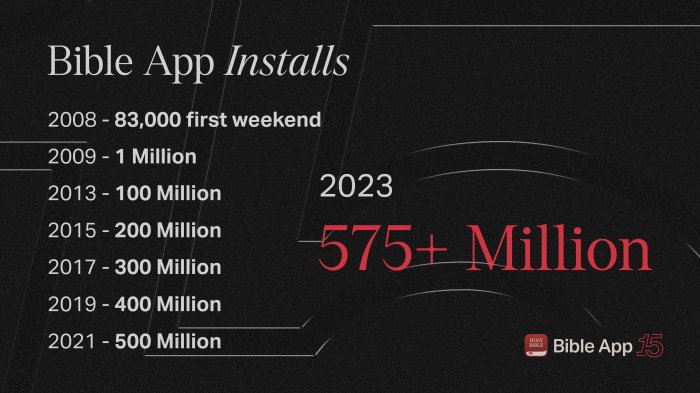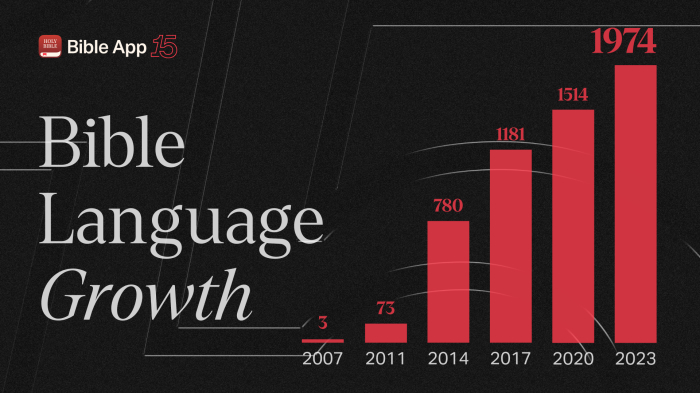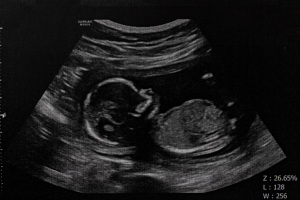Will digital Bibles like the YouVersion Bible App displace paper ones?

With more than 95 installs per minute, Life.Church’s YouVersion Bible App celebrated its 15-year anniversary this month on more than 575 million unique devices in nearly 2,000 languages and the digital popularity of the Word of God is showing no signs of slowing down.
YouVersion CEO Bobby Gruenewald explained in a recent release from the donor-funded nonprofit that the Bible App was one of just 800 apps available for download when Apple launched its iOS App Store on July 10, 2008.
In the first three days, the app was downloaded more than 83,000 times, far more downloads than Gruenewald had expected to have at the end of 2008. Today, the Bible App continues to exceed expectations even in a sea of more than 1.6 million apps that include hundreds of other Bible apps in the iOS App Store.
“When we submitted the app for approval, we didn’t even know if it would make it into the App Store on opening day or even at all,” Gruenewald recalled. “It ended up being one of only a couple hundred free apps available that first day and went on to have an incredible first weekend. Honestly, our minds were blown.”
And as people have continued integrating the Bible App in their daily lives over the years, its popularity has only continued to soar.
“Over the last 15 years, YouVersion has leveraged industry innovations to help people build consistent Bible engagement habits, including using push notification reminders, gamification features like streaks, and community features like friendships and prayer,” the YouVersion release said.

When the Bible App was first launched, the text only featured two languages but by its fifth year, it had more than 500. The text of the Bible App is now featured in nearly 2,000 languages and the plan is to feature Scripture in the world’s more than 7,000 languages by 2033.
As digital Bibles like YouVersion Bible App continue growing in popularity, will they one day replace physical Bibles?
For now, according to Digital Millennials and the Bible produced in partnership with the Barna Group in 2018, the print version of the Bible appears to be the choice of the majority of young people, 47% to 28%.
Women especially preferred the print version 50% to 24% digital. While more men, 31%, than women preferred the digital version of the Bible, 43% still listed a print Bible as their top choice to engage with the Word of God.
Responding to questions from The Christian Post about whether data from the Bible App could suggest an eventual replacement of physical Bibles by the technology, Gruenewald said he believes the Bible app complements engagement with the Bible.
“The Bible App has been an effective tool to help people read the Bible more consistently, but I don’t think the print Bible is going away. In fact, many of our users regularly use both,” he said in an email to CP.

Asked about the use of the Bible on Sunday mornings when many Christians go to church, Gruenewald said every Sunday there is “a spike in the use of the Bible App.”
“Ultimately, we want people to spend time in God’s Word every day in whatever format works best for them. And while we naturally see a spike in the use of the Bible App every Sunday, we’re encouraged to see consistent Bible engagement throughout the week,” he said.
“We believe we’re just at the beginning of what God wants to do through YouVersion. Even after 15 years, our perspective is that our story isn't in the past tense, but it's a story that has a really big future in front of it as we remain focused on how to help millions of people build intimacy with God through His Word,” Gruenewald added.
John Dyer, vice president for enrollment and educational technology and assistant professor of theological studies at Dallas Theological Seminary, also doesn’t believe the printed Bible will be made obsolete by digital versions.
“It appears the Bible is following the larger trend in the book and eBook industry. Initially, many people predicted the Kindles, Nooks and iPads would completely replace paper books, but after a few decades, it appears people still like reading and studying printed books, including the scriptures,” Dyer, who authoredPeople of the Screen: How Evangelicals Created the Digital Bible and How It Shapes Their Reading of Scripture, told CP.
Dyer noted that with digital technology, the Bible “is no longer ‘just the text,’ but a multimedia category, with all kinds of things added to it in all different mediums.”
“It’s available on print, screen and audio. It has tons of little numbers added a few centuries ago (verses), commentaries, maps, and even interactivity. All of these can be helpful, and all of them can be formative in both positive and negative ways. What matters is that we pay attention,” he explained.
While the embrace of digital Bibles has its benefits, Dyer also worries that it might make Christians even lazier when it comes to committing Scripture to memory.
“I have concerns with printed Bibles, including taking the Bible out of the church community and making it highly individualized, adding the chapter: verse numbers which chop up the text and encourages reading sentences rather than paragraphs and books, and decreasing the amount of the Scripture that we have memorized because we always have access to the printed page,” he said. “The digital Bible, in all its forms, mostly accelerates these trends, giving more access (which is wonderful!) but also risking making the word of God more individualized and atomized, and yet unknown to us.”
Still, Dyer had high praise for the innovators who are working to increase engagement with Scripture.
“I appreciate all the innovators out there trying new things and encouraging new forms of Bible engagement, trusting that the spirit will guide us,” he told CP. “I encourage both users and programmers to think about how to develop apps and tools that draw us into communities who immerse ourselves in large portions of Scripture.”
Contact: leonardo.blair@christianpost.com Follow Leonardo Blair on Twitter: @leoblair Follow Leonardo Blair on Facebook: LeoBlairChristianPost





























